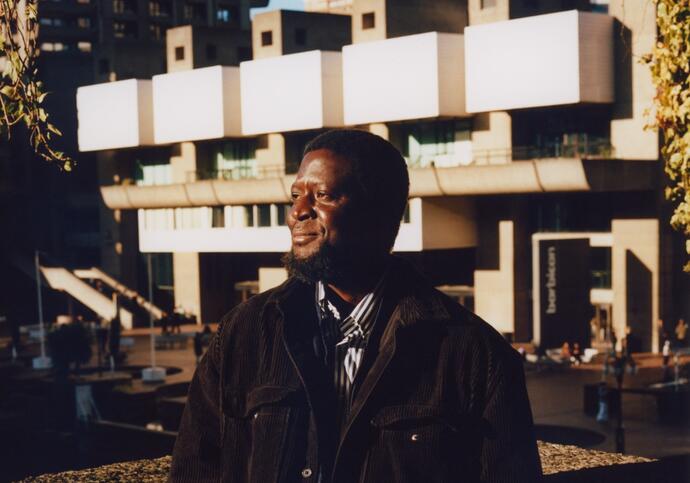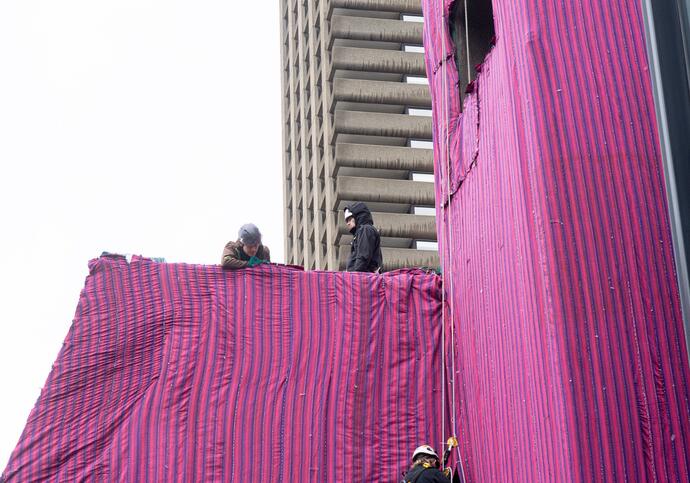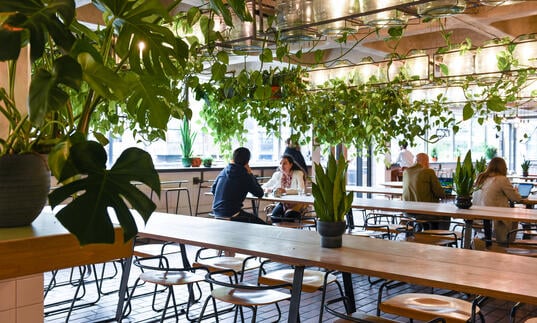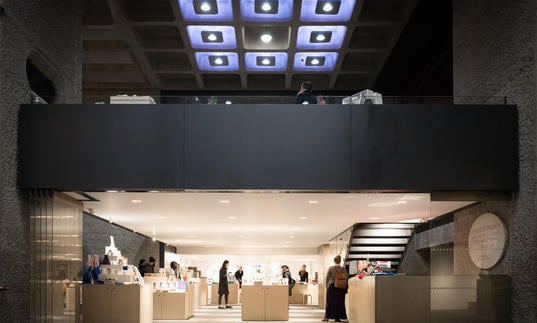

About the artist

Ibrahim Mahama (b.1987)
Ibrahim Mahama was born in 1987 in Tamale, Ghana. He lives and works in Accra, Kumasi and Tamale.
His creative practice is grounded in the democratic belief that art belongs to all. Fearless when it comes to scope and scale, his works claim space, demand questions and enquiry, but also reflect solidarity with the craftspeople, weavers and makers in Ghana with whom he collaborates.
At the heart of Mahama's practice is his conviction that Ghanaians, and all those outside of the exclusive environs of the art market, should have the opportunity to engage with art.
Committed to institution building, his Red Clay Studio and Savannah Centre for Contemporary Art in Tamale, Ghana, provide social infrastructure for arts education, exhibition making and residencies.
Watch

Ibrahim Mahama on making Purple Hibiscus
We asked the artist behind the work where his inspiration came from, how his collaborative practice works, and why he strayed away from the usual earthy tones of previous work to something so bright and vibrant.

Installing Purple Hibiscus
Watch the transformation of our Lakeside Terrace as Ibrahim Mahama’s Purple Hibiscus was installed over several weeks.

See how the fabric was made
Watch footage of the making of Purple Hibiscus in Tamale where hundreds of craftspeople around Ghana wove the fabric by hand.
Courtesy of Ibrahim Mahama. Filming by OBL Studios, Tamale, Ernest Sackitey and Red Clay, Tamale.
Making the fabric

The beginning of Purple Hibiscus
Purple Hibiscus comprises vast textile pieces that are hand-sewn from strips of woven fabric to a precise plan to fit the outside of our building. The pieces are so large that, on days when matches weren’t taking place, the artist rented out the Tamale football stadium so the work could be spread out on the floor as it was sewn by hundreds of women from local sewing collectives.
The communities Mahama lives and works in are central to his practice, and his art celebrates the value of human labour. For the Barbican commission, he collaborated with Tamale weavers and sewing collectives to make the material that adorns the Lakeside buildings.
Installation

Wrapping the Lakeside Terrace
Made up of around 2km of fabric, the huge artwork weighs a total of 20 tonnes. To hang such an enormous work from our Grade II listed building involved considerable engineering experience. It also needs to be able to withstand wind and keep noise to a minimum.
Buro Happold, the engineers who are working on the Barbican renewal project, are behind the installation of Purple Hibiscus.
The enormous fabrics were made to a cutting pattern and hung using a system of straps, ratchets and weights. They have been fitted closely to the building in order to avoid issues around noise and wind.
Barbican Lakeside Terrace
Location
Lakeside Terrace is on Level G and can be accessed by the Level G foyers, and through the doors to outside.
Address
Barbican Centre
Silk Street, London
EC2Y 8DS
Public transport
The Barbican is widely accessible by bus, tube, train and by foot or bicycle. Plan your journey and find more route information in ‘Your Visit’ or book your car parking space in advance.



